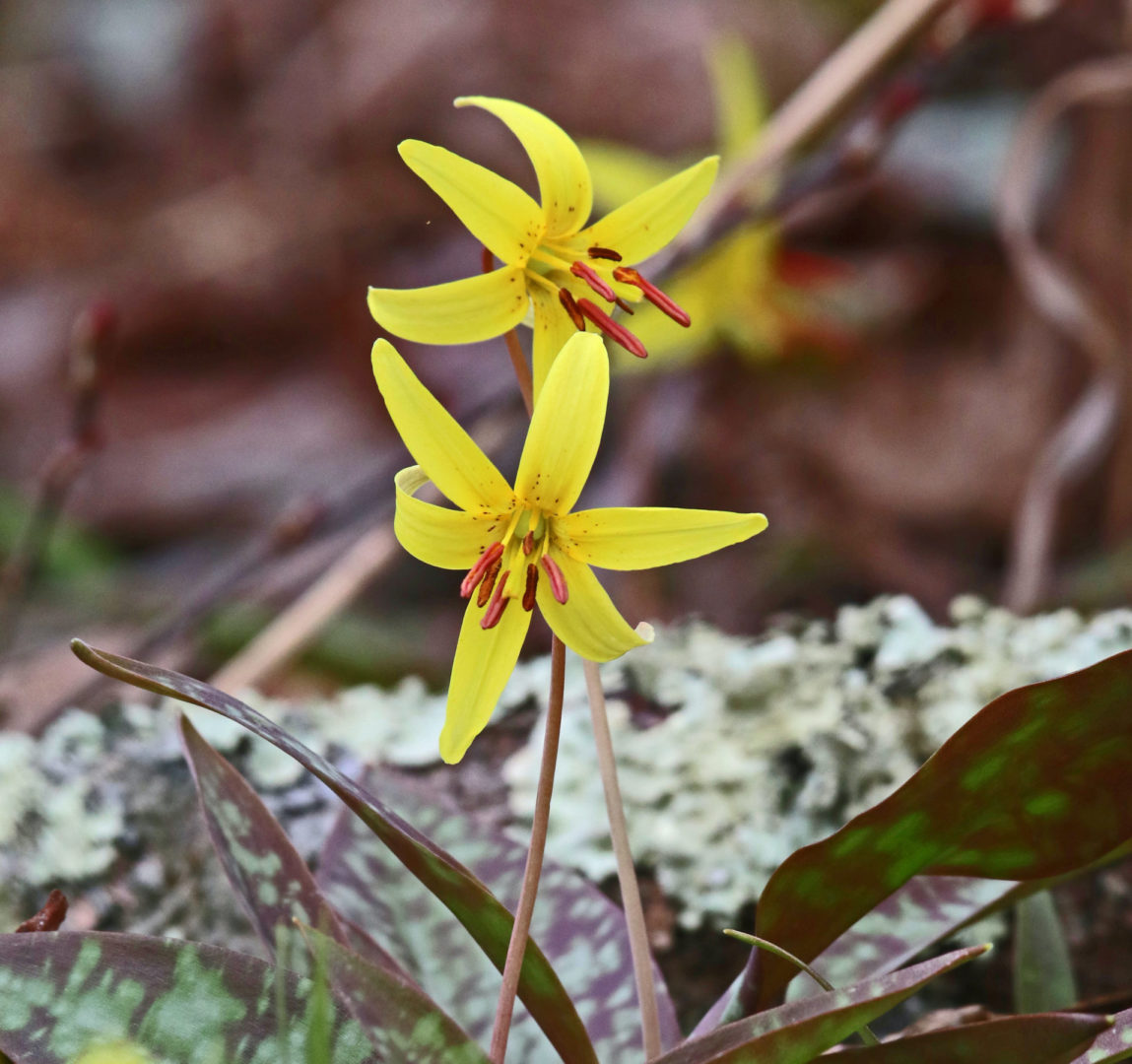
Trout-lily at Soaring Eagle Wetland in Julian. Photo by Mark Nale | For The Gazette

Trout-lily at Soaring Eagle Wetland in Julian. Photo by Mark Nale | For The Gazette
“Trout Time” it is, with anglers lining local streams, but it is also time for an often overlooked wildflower — the trout-lily. Trout-lily is a small yellow wildflower that is so named because its leaf coloration resembles the speckled coloration of Pennsylvania’s native brook trout.
Trout-lily is a long-lived perennial wildflower. It occurs in suitable habitat anywhere in the eastern half of the United States and eastern Canada. According to the Natural Resources Conservation Service, it has been located in every county in Pennsylvania except Juniata, Montour and Columbia.
Trout-lily can be found forming massive colonies in rich forest soils and often along trout streams. Because it makes its home in forested habitat, trout-lily is an ephemeral wildflower. Its leaves emerge early, and it blooms in April before the leaf canopy pulls the curtain on its source of life-giving sunlight.
In our area, trout-lily’s smooth leaves can first be found in March — growing up from a starch-rich underground bulb or corm. Young plants have a single, straight-edged, pointed leaf that ranges from two to six inches long. Most leaves share the characteristic light green color — mottled with the brown or purplish spots, from which its name is derived. Older plants sport two pointed leaves — often longer than those found on single-leaved plants.
If you are anxiously awaiting a trout-lily to bloom, you might be in for a big disappointment. Plants grow single leaves for 4 to 7 years before sprouting a pair of leaves and sending up a flowering stem from between the base of the paired leaves.
The flower is first visible as an inch-long drooping bud at the end of a 5- to 10-inch long stalk.
The flower bud might appear more brown or purple than yellow.
The bud opens a day or two later to reveal three yellow petals and three petal-like sepals.
Anyone without a degree in botany would just say that it has six yellow petals, which curl back from the center. The flowers close at night and re-open the next day.
As with most seed-bearing plants, trout-lily has both male and female organs in a single flower. Pollen fertilizes the ovules, but the union only produces seeds about 10 percent of the time. When seeds are produced, they have a lipid and protein-rich coating, which attracts ants. The ants carry the seeds to their nest to feed the coating to their young. The trout-lily benefits from this symbiotic relationship because the ants protect the seed and aid in dispersal.
However, most trout-lily reproduction is asexual, with their underground bulbs “budding” smaller bulbs, much the same way that tulips reproduce. The parent plant can also send out a “dropper,” a small side shoot that develops into a new bulb.
This plant’s asexual reproductive habits often result in dense colonies of plants covering many square yards. According to The Canadian Wildlife Federation, some colonies are reputed to be as old as 300 years.
Some foraging websites and texts recommend eating trout-lily corms, leaves and flowers. However, the plant is emetic — containing a chemical or chemicals that can make you vomit.
Some people know this plant as dogtooth violet or adder’s tongue. The name “dogtooth” comes from the appearance of the plant’s white, tooth-like underground bulb or corm. “Adder’s tongue” refers to the leaf shape which reminds some of the shape of a snake’s tongue. However, since it is a true lily (with flower parts in threes), trout lily is the most appropriate name.
Trout-lilies will grow in moist, shaded gardens with rich, slightly acidic soil. Companion spring flowers could be bloodroot, Dutchman’s breeches, spring beauties or red trillium, which all require a similar habitat. Be sure to purchase plants from a reputable nursery that specializes in native plants.
Trout-lily is blooming now in wooded habitat at Bald Eagle State Park, Soaring Eagle Wetland, Canoe Creek State Park and many other nearby locations. Although there are a number of April-blooming species that have small yellow flowers, none of them have trout-lily’s unique mottled green and purple leaves. Enjoy them now, because their flowers disappear in May and the leaves die back to the ground by the end of June.
Mark Nale writes about the outdoors for The Centre County Gazette. This column appears in the May 6-12 edition of The Gazette.
Receive all the latest news and events right to your inbox.

80% of consumers turn to directories with reviews to find a local business.